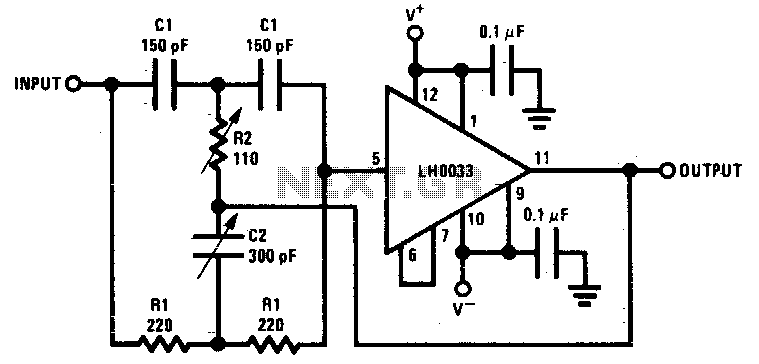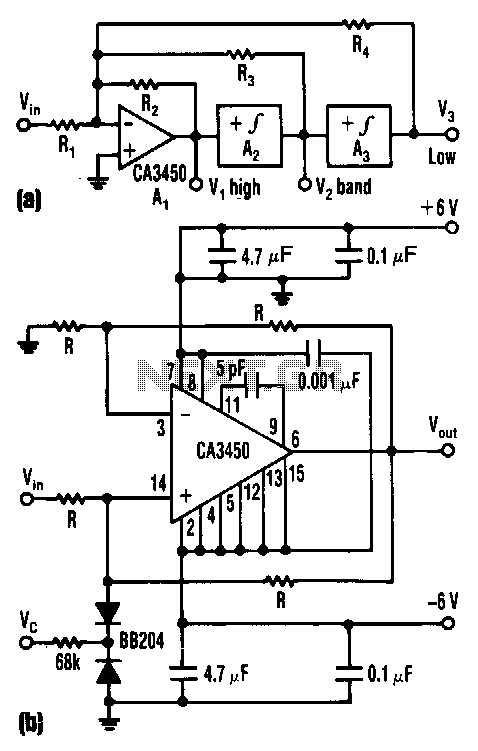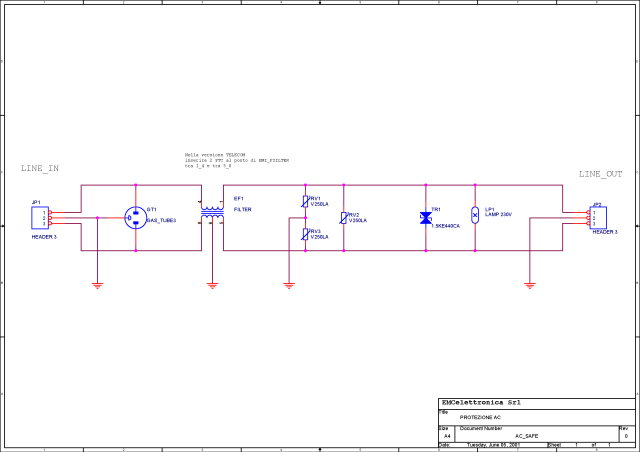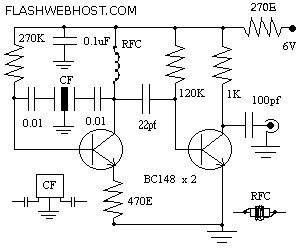
4.5Mhz notch filter

Component value sensitivity is extremely critical, as are temperature coefficients and matching of the components. Best performance is attained when perfectly matched components are used and when the gain of the amplifier is unity. To illustrate, the quality factor Q is very high as amplifier gain approaches 1 with all components matched (in fact, theoretically it approaches infinity) but decreases to about 12 with the amplifier gain at 0.8.
In electronic circuit design, particularly in amplification systems, the sensitivity of component values plays a pivotal role in determining overall performance. The precision of component values, along with their temperature coefficients, is essential to maintain the integrity of the circuit's functionality. When components are perfectly matched, the gain of the amplifier can be optimized to unity, which is the ideal scenario for achieving maximum performance.
The quality factor (Q) is a significant parameter in this context, as it quantifies the sharpness of the resonance peak in frequency response. As the gain of the amplifier approaches unity, with all components ideally matched, the Q factor theoretically tends toward infinity, indicating an extremely narrow bandwidth and high selectivity. However, as the amplifier gain is reduced to 0.8, the Q factor diminishes to approximately 12. This reduction in Q indicates a broader bandwidth and lower selectivity, which may not be desirable in applications requiring high precision and stability.
For circuit designers, it is crucial to select components with closely matched specifications, particularly in high-frequency applications where small deviations can lead to significant performance degradation. Additionally, maintaining a stable temperature environment is vital to ensure that the temperature coefficients of the components do not adversely affect the circuit's behavior. Overall, achieving optimal amplifier performance necessitates careful consideration of component matching, gain settings, and environmental stability.Component value sensitivityis extremely critical, as are temperature coefficients and matching of the components. Best performance is attained when perfectly matched components are used and when the gain of the amplifier is unity
To illustrate, the quality factor Q is very high as amplifier gain approaches 1 with all components matched (in fact, theoretically it approaches «) but decreases to about 12 with the amplifier gain at 08.
In electronic circuit design, particularly in amplification systems, the sensitivity of component values plays a pivotal role in determining overall performance. The precision of component values, along with their temperature coefficients, is essential to maintain the integrity of the circuit's functionality. When components are perfectly matched, the gain of the amplifier can be optimized to unity, which is the ideal scenario for achieving maximum performance.
The quality factor (Q) is a significant parameter in this context, as it quantifies the sharpness of the resonance peak in frequency response. As the gain of the amplifier approaches unity, with all components ideally matched, the Q factor theoretically tends toward infinity, indicating an extremely narrow bandwidth and high selectivity. However, as the amplifier gain is reduced to 0.8, the Q factor diminishes to approximately 12. This reduction in Q indicates a broader bandwidth and lower selectivity, which may not be desirable in applications requiring high precision and stability.
For circuit designers, it is crucial to select components with closely matched specifications, particularly in high-frequency applications where small deviations can lead to significant performance degradation. Additionally, maintaining a stable temperature environment is vital to ensure that the temperature coefficients of the components do not adversely affect the circuit's behavior. Overall, achieving optimal amplifier performance necessitates careful consideration of component matching, gain settings, and environmental stability.Component value sensitivityis extremely critical, as are temperature coefficients and matching of the components. Best performance is attained when perfectly matched components are used and when the gain of the amplifier is unity
To illustrate, the quality factor Q is very high as amplifier gain approaches 1 with all components matched (in fact, theoretically it approaches «) but decreases to about 12 with the amplifier gain at 08.





